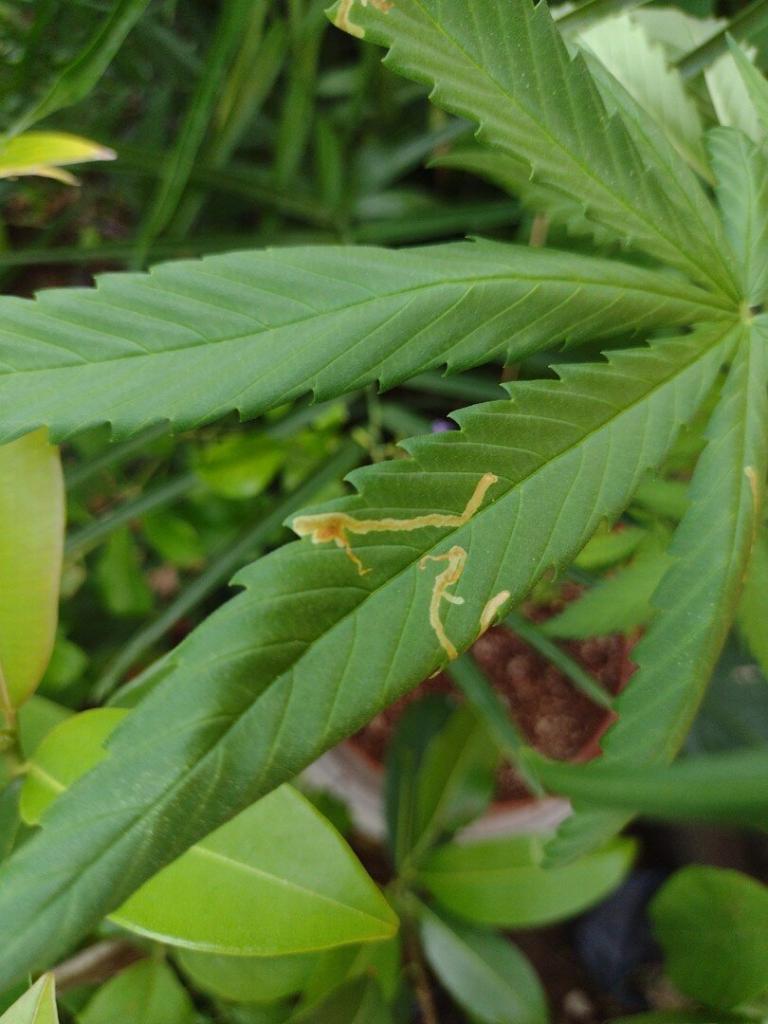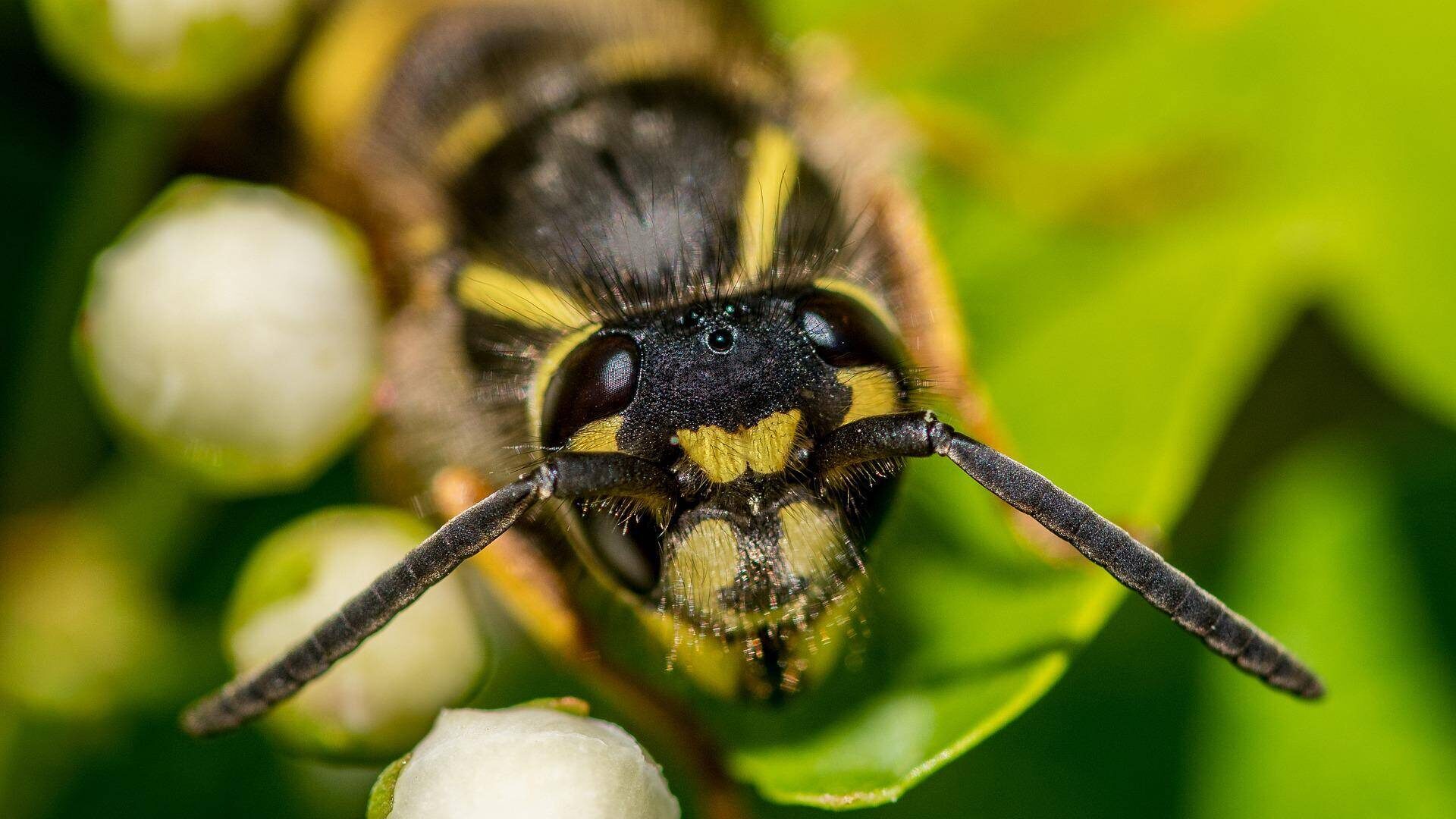Fighting cannabis pests with the help of beneficial insects
Beneficial insects are a natural and safe form of pest control that can be used to protect against cannabis pests. They are a great alternative to pesticides, and they are not harmful to the environment. The use of beneficial insects is becoming more popular in the face of pesticide resistance and growing public concern about the risks associated with chemical pest control. Several factors must be considered when selecting beneficial insects for release into a particular environment: the type or species of insect; their life cycle; how fast they multiply in numbers; whether they are native to that area or not; where they will live in the environment; what they will feed on and more. The use of beneficial insects is becoming more common in the cannabis industry as it has been proven to be a sustainable way to decrease the use of pesticides while still maintaining the desired quality for the product.
In the following, we review the common cannabis pests and the beneficial insects that can come to the rescue.
Aphids
Aphids are small polyphagous (0.5-5 mm), sap-sucking insects that come in various colors and shapes. Most aphids don’t have wings, but the ones range in colors from black, green, pink, yellow, etc. Aphids are one of the most widely distributed pests in the world and are major cannabis pests.
Feeding can cause stunting and plant/leaf deformities such as curling, while honeydew secretions are a “fertile ground” and a major contributor to the development of sooty mold fungi that can lead to a decrease in photosynthesis.
Aphids are a major vector for dozens of viruses. That alone is enough to put aphids at the top of the most globally economically hazardous list for crops.

Predators
aphidius colemani
This parasitic wasp is part of the family Braconidae and feeds on several species of aphids, including the peach aphid and the pumpkin aphid. The adult wasp is thin with black, brown, and yellow colors in its different body parts.
It is sensitive to high temperatures and its optimum temperature range is 20-30 degrees Celsius. It lays a single egg inside the aphid’s body. The hatched larva feeds on the internal tissues of the aphid. The aphid becomes a “mummy” with a swollen, brown appearance.
Mealybugs
Considered to be soft-scale insects, mealybugs derived their name from their appearance. Usually, mealybugs are covered with a sticky wax floury or cornmeal-like whitish powder. Some species reproduce sexually, while others are parthenogenic. Mealybugs may be oviparous, viviparous, or ovoviviparous. Their eggs are usually laid in loose masses of cottony wax ovisacs. The flowering and fruiting phases of plants help support a larger mealybug population.
These cannabis pests feed on the phloem by sucking sap from plants. Symptoms appear as small white patches on stems and fruits, followed by the formation of honeydew and the development of sooty mold near infected areas. Mealybugs are known for their ability to transmit plant viruses and can cause heavy losses.
Predators
Anagyrus pseudococci
A parasite that lays a single egg into the mealybug body. The larva that hatches from the egg feeds on the mealybug body and mummified it.
Cryptolaemus montrouzieri
Coccinellid predator that reaches 4 mm long in its adult form; The insect color is dark brown with an orange abdomen. Young larvae prefer mealybugs eggs and larvae, while adults feed on all stages of the pest without preference.
The optimal conditions for its development are 26 Celsius and 60% humidity.
Red spider mites
Red spider mites are small arthropods classified as Arachnida and members of the Tetranychidae family, along with hundreds of different species. They are distributed worldwide and considered a persistent concern for farmers in warm, arid, and dry weather regions.
When weather conditions are right, a female can lay up to seven eggs a day and will do so on the underside of leaves. Adults feed upon plant tissues leaving yellowish nourishing marks.
Red mite presence in fields could go unnoticed until infestation reaches a critical point where plant damage is visible.
Predators
Amblyseius swirskii
This particular predatory mite belongs to the Phytoseiidae family. It’s known as the swirskii mite and is a general carnivorous critter that consumes pollen from flowers, as well as Western flower thrips, whiteflies, and red mites.
The mite color can be white, white-yellow, and even light orange. Its color depends on the color of its prey.
The optimum for its development is 25-28 degrees Celsius; The duration of development from egg to adult at a temperature of 26 degrees Celsius lasts about 5-6 days.
Phytoseinulus perssimilis
The Presimilis mite, belonging to the Phytoseiidae family of predators, preys on other mites and small insects. These predatory mites can act as a natural way to keep certain pests in check and are especially effective due to their specificity.
Females are pear-shaped. They have a red-orange hue and, with their long front legs and rapid movement, can capture red mites with ease. The pest feeds on red mites in all growth stages, with a preference for eggs.
The optimal conditions for their development are 21-28 degrees Celsius and a humidity of 60%. In optimal conditions, the pest completes its life cycle within a week.
Leafminers
Leafminers are insects belonging to different orders: sawflies belong to hymenoptora, flies belong to the order of diptera, and moths that belong to the order lepidoptera. Together, they form a large group of plant pests that are important to cultural crops worldwide.
Feeding patterns are important in helping identify the genus and the species, which is quite characteristic. Leafminers are year-long pests that favor warm environments.
The first signs of infestation are tiny yellow dots upon leaves’ upper surfaces. The spots depict where the female laid her eggs. A week after, maggots begin eating their way inside the leaf tissue, thus creating those complex tunnels we recognize so easily. The tunnel provides sufficient living conditions for the larvae. In the following ten days, the tunnel gets wider and longer. Eventually, maggots pop out and fall to the ground, where they’ll complete their metamorphosis and turn into a fly after another ten days.
Its larvae stage is the one responsible for the actual damage. In a large enough population, it can cause a significant drop in yields due to sabotaging photosynthesis.

Predators
Diglyphus isaea
The parasitic wasp Diglyphus belongs to the family Eulophidae. a natural enemy of dipteran leafminers and a successful commercially available biological product against leafminers.
Diglyphus acts as an external parasite and lays eggs outside the host’s body. The adult is small and is black in color with a metallic green sheen protruding from its surface.
The female injects the leafminer maggot with paralyzing fluid before laying eggs and depositing them close to its body. The maggot stays paralyzed for two weeks, and the larvae that hatch from the egg (after two days) feed on the pest. The adult female is nourished by the body fluids of the pest maggots as well.
At an optimal temperature of 20-25 degrees Celsius, the graduates can live up to 30 days.
Whiteflies
Bemisia tabaci, also known as whitefly, is a multi-host with considerable differences that exist in appearance between adult and nymph stages. Females can lay dozens of eggs, usually on the underside of leaves. Nymphs feed by stabbing into the plant with their mouth parts, sucking up sap from the phloem, and excreting honeydew (a sugar-rich substrate that promotes the growth of sooty mold.) The adults are white and capable of flying, hence the name.
Damage to hosts is caused directly by feeding and indirectly by honeydew. However, their ability to spread viruses has the greatest economic impact. Whitefly vector plant viruses like Begomoviruses, which is a group of plant viruses such as TYLCV in tomatoes and CYSDV in cucurbits. Whiteflies transmit Begomoviruses to host plants.
Predators
Macrolophus pygmaeus
This light green insect is a predator of small arthropods. It is considered an effective predator of whiteflies and tuta absoluta but also feeds on eggs of the whiteflies, thrips, mites, and aphids.
Amblyseius swirskii
Refer to the sections above.
Western Flower Thrips
Western flower thrips are small, polyphagous insects (adults are 1.2 mm in length). They are serious cannabis pests. They can usually be found on the upper parts of plants, especially inside the flowers, where they feed on pollen. Western flower thrips undergo partial metamorphosis, developing through several distinct stages, including egg, larva, pupa, and adult-which can fly only weekly.
They can cause damage to crops directly from feeding or laying eggs in the plant’s tissue and indirect damage from the role it plays as a vector of viruses.

Predators
Orius laevigatus
The carnivorous flea Orius is a relatively small insect that belongs to the family Anthocoridae.
It feeds mainly on insects but also on plants. When feeding on plants, it feeds on the sap and pollen, without harming the plant. Pests such as western flower thrips, whiteflies, and red mites are its source of prey. At an optimal temperature of 25 Celcius, the flea completes its development from egg to adult within 16-18 days and can live up to a month. Luckily, at all stages of development, it can devour pests.
Macrolophus pygmaeus
Refer to the sections above.
Further considerations in cannabis pests control
When the infestation is getting out of control, chemical insecticides might be required. On such occasions, there is a need to select pesticides that are not harmful to the beneficial insects. The Agrio app can help you to choose the right product.
Summary
Integrated cannabis pest management is the approach of combining methods that work better together than separately. It allows diseases and pests to be controlled by managing the ecosystem, which results in long-term cannabis pest control that is less risky to farmers and the environment. IPM is an environmentally sound approach that has been shown to reduce pesticide use by 80% or more compared with conventional pest control approaches. We look forward to seeing you leveraging this information for intelligent and effective pest management in your growing areas.
In the meantime, as always, we wish you an abundant harvest.
